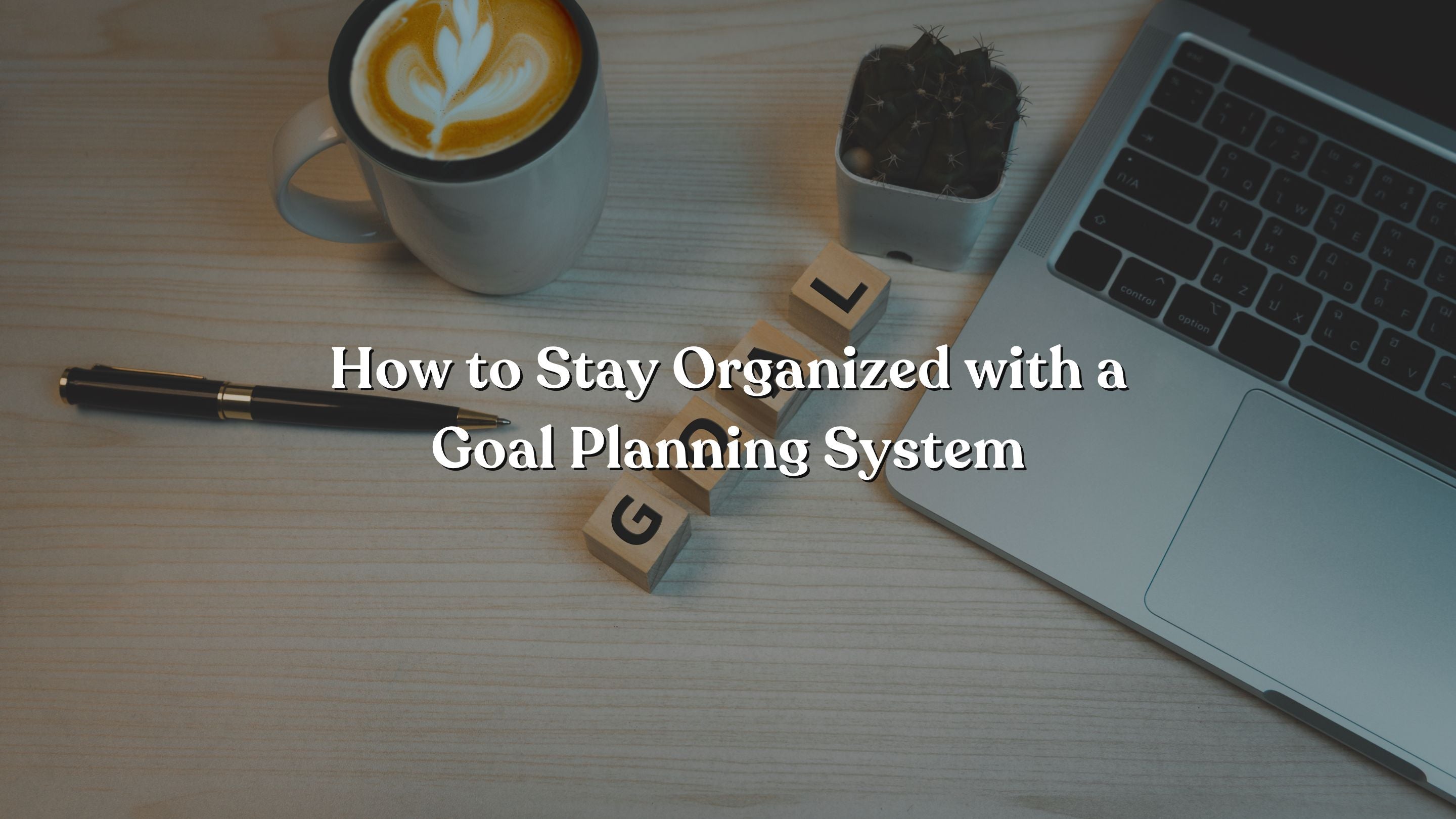How to Stay Organized with a Goal Planning System
How to Stay Organized with a Goal Planning System
Most of us set goals with the best intentions—whether it’s sticking to a routine, finishing a big project, or improving our mindset. But without a clear system, it’s easy to lose momentum. That’s where a goal planning system can make all the difference.
Instead of just writing down your goals, a good system helps you break them into steps, track your progress, and stay motivated along the way. Here’s how to create a goal planning system that actually works.
1. Define Your Big Picture Goals
The first step is clarity. Before diving into daily tasks, take time to write down your long-term goals. These can be personal, professional, academic, or a mix of all three.
Questions to ask yourself:
-
What do I want to achieve this year?
-
Why is this goal important to me?
-
How will I measure success?
💡 Tip: Writing your goals in a structured space, like the goal-setting pages inside the Define Planner makes it easier to revisit them regularly.
2. Break Goals into Actionable Steps
Big goals can feel overwhelming until you divide them into smaller, achievable steps. Think of your planner as a bridge between the “big vision” and the “daily actions.”
-
Use monthly pages to outline milestones.
-
Use weekly pages to list key actions.
-
Use daily spaces to break tasks into morning, afternoon, and evening, making your goals part of your everyday routine.
When your goals live inside your schedule, they stop being wishes and start becoming habits.
3. Stay Motivated with Mindset Practices
Organization isn’t just about logistics—it’s about motivation. Pairing your planning with mindset tools like gratitude, affirmations, and reflection will help you stay consistent.
For example, the Navigate Journal guides you through daily prompts like gratitude logging and affirmations. These small reflections keep you grounded and remind you why your goals matter, even on the tough days.
4. Keep Everything in One Place
Disorganization often happens when your tools are scattered. Make your planning system simple by keeping everything together:
-
A dedicated space to write (planner + journal)
-
A favorite pen you enjoy using
-
A way to keep tools together
The easier it is to sit down and plan, the more likely you are to stay consistent.
5. Review and Reset Often
A good goal planning system isn’t “set it and forget it.” The real power comes from reflection and adjustment.
-
Weekly: Ask yourself, What worked this week? What can I improve next week?
-
Monthly: Revisit your long-term goals. Are you moving closer to them? Do they still feel aligned?
-
Quarterly: Celebrate wins, reset priorities, and let go of what’s no longer serving you.
This rhythm of planning, doing, and reviewing helps you build momentum while staying flexible when life changes.
Why a Goal Planning System Matters
When you combine clarity + structure + mindset + reflection, you create more than just a planner routine—you create a lifestyle of intentional living.
At Define, every tool we design—from Undated Planner to Academic Planner to Journal—is built to help you navigate your life with purpose.
Because staying organized isn’t just about time management. It’s about becoming who you want to be, one day at a time.



